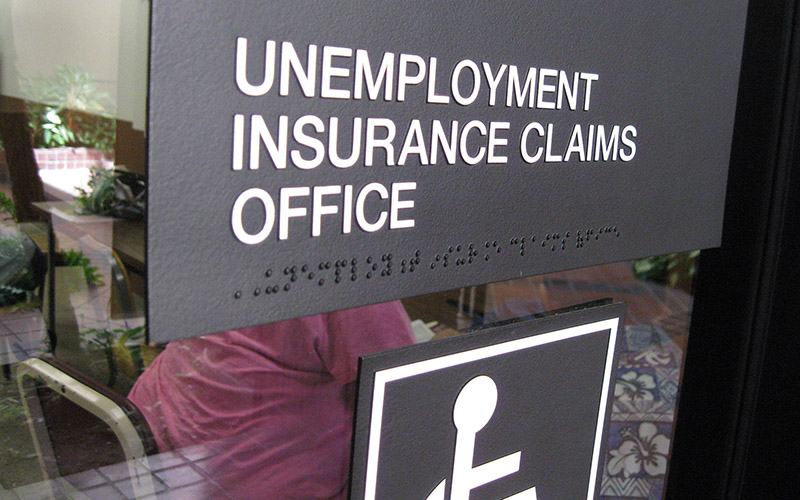WASHINGTON – After three weeks of record-breaking unemployment filings, jobless claims for the state and the nation dipped slightly last week, but they were still in what one economist called “shockingly high” territory.
Arizona recorded 95,382 new unemployment claims last week, down from 132,382 the week before, according to preliminary numbers from the Arizona Department of Economic Security. The Labor Department said claims nationwide fell to 5.2 million last week from the previous 6.6 million.
Experts said that while the dip in new claims is welcome, it’s nothing to celebrate because the “claims data are so volatile from week to week.” Stephanie Aaronson, an economic director at the Brookings Institute, said it “just shows the extent to which the economy is shutting down now.”
The claims are part of what one economist called an “extraordinary … rapid surge in unemployment” that is being driven by the COVID-19 pandemic, as schools, services and many businesses across the country cut back or shut down in an effort to prevent the spread of the disease.
Jobless claims started to jump about a month ago, as businesses and industries furloughed or laid off workers. In the week ending March 21, state and national numbers surged to almost 10 times their normal levels, shattering previous records – and continuing to rise in subsequent weeks.
Over the last month, close to 350,000 Arizonans and more than 21 million Americans have filed unemployment claims.
Official unemployment rates for April will not be announced until early next month. But experts said that, based on the spiraling number of claims in recent weeks, the unemployment rate is certain to exceed the national rate of 4.4% for March and the Arizona rate of 4.5% for February, the latest month for which the Bureau of Labor Statistics has data.
“We’re really in uncharted waters in terms of interpreting the unemployment rate and what the data are telling us,” said Chad Stone, chief economist at the Center on Budget and Policy Priorities. But Stone believes the jobless rate will jump significantly.
He said that while new claims may be slightly down last week, continuing claims – the number of people who have applied for unemployment insurance again and people who continue to receive benefits – have increased dramatically.? In Arizona, DES reported 164,483 continuing claims last week, compared to 17,595 such claims in late March.
DES has been scrambling to keep pace with the flood of applications, hiring more workers and making changes to speed the application process.
“We know from these numbers that this is an extremely challenging time for Arizonans, and the Department of Economic Security is working hard to process unemployment claims as quickly as possible,” DES Director Tom Betlach said in a statement Wednesday. “We are paying out higher numbers each week and this will only continue as we enhance our systems and scale our staff.”
The $2 trillion federal CARES Act signed into law last month allocated billions to bolster unemployment insurance funds, including an extra $600 weekly to unemployed workers. DES said unemployed workers in the state started seeing that extra money in their benefits payments this week.
But economists warn that slow rollouts of federal dollars might be worsening an already catastrophic situation.
“It just seems that it is taking a long time to get people the money,” Aaronson said. “People’s hearts were in the right places, I think there were a lot of good elements of the proposals that have been passed but I just worry that the money is getting out too slowly and it’s not going to be enough.”
Stone said there will likely not be a quick recovery, even after social distancing ends and businesses open back up.
“This is extraordinary in our history, this rapid surge in employment, joblessness and it is going to continue for a while longer for sure,” Stone said. “When we start to go back to work it (unemployment) will come down, but it will remain high because the economy is not going to instantly snap back.”


